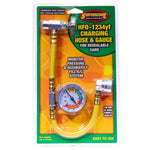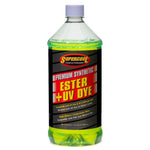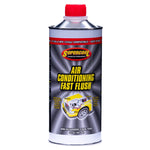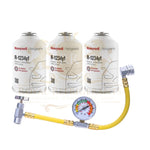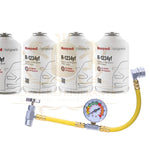You have no items in your shopping cart.
Everything You Need to Know About Is R134a Harmful to the Environment for HVAC and Automotive Applications
Since its introduction in the early 1990s, R-134a (HFC-134a) has been one of the most widely used refrigerants in HVAC and automotive air conditioning systems worldwide, especially in the United States. It replaced the ozone-depleting CFC-12 (R-12) and quickly became the industry standard due to its excellent cooling performance, safety, and cost-effectiveness.
However, as environmental awareness and climate policies have evolved, one important question continues to arise: Is R-134a harmful to the environment? The answer is more complex than a simple “yes” or “no.” This article breaks down everything you need to know about R-134a’s environmental impact, regulatory status, and future in HVAC and automotive applications.
What Is R-134a and Why Was It Introduced?
R-134a is a hydrofluorocarbon (HFC) refrigerant with the chemical formula CH₂FCF₃. It belongs to the first generation of HFCs developed as replacements for chlorofluorocarbons (CFCs) like R-12, which were banned due to their destructive effect on the ozone layer.
R-134a’s main advantages include:
Zero ozone depletion potential (ODP) :It does not damage the Earth’s protective ozone layer.
Good thermodynamic performance – Effective cooling capacity for HVAC and automotive systems.
Non-flammable and non-toxic (ASHRAE A1) – Safe to handle and use.
These characteristics helped R-134a become the dominant refrigerant for automotive A/C systems and medium-temperature HVAC applications throughout the 1990s and 2000s.
Is R-134a Harmful to the Ozone Layer?
No. One of the primary reasons R-134a replaced R-12 is because it has zero ozone depletion potential (ODP = 0). Unlike CFCs and HCFCs, HFCs like R-134a do not contain chlorine, which is responsible for ozone layer destruction.
This means R-134a does not harm the ozone layer, and in that regard, it is far more environmentally friendly than the refrigerants it replaced.
R-134a’s Impact on Global Warming
While R-134a is ozone-friendly, it does have a significant impact on global warming. Its global warming potential (GWP) is approximately 1430, meaning it is 1,430 times more potent than carbon dioxide (CO₂) in trapping heat in the atmosphere over a 100-year period.
For comparison:
- 🌍 CO₂ GWP: 1
- ❄️ R-12 GWP: ~10,900
- ❄️ R-134a GWP: ~1430
- 🌱 R-1234yf GWP: <1
While it’s much better than older refrigerants like R-12, R-134a still contributes significantly to greenhouse gas emissions if released into the atmosphere — especially when leaks occur from HVAC units or automotive A/C systems.
How R-134a Contributes to Climate Change
When R-134a is used in HVAC and automotive systems, it remains safely contained within a sealed circuit. However, leaks during servicing, improper disposal, or system failures can release it into the atmosphere. Because it’s a long-lived greenhouse gas, even small amounts can contribute to global warming over time.
This environmental impact is why regulators and manufacturers are now transitioning to low-GWP refrigerants like R-1234yf in cars and R-513A or R-450A in HVAC systems.

U.S. Regulations and Phase-Down Plans for R-134a
The United States, under the American Innovation and Manufacturing (AIM) Act, is actively reducing the production and consumption of high-GWP HFCs, including R-134a. While it is not banned outright, its use in new equipment is gradually being restricted:
- 🚗 Automotive: Since 2017, new vehicles in the U.S. have been transitioning to R-1234yf, which has a GWP of less than 1.
- 🏠 HVAC systems: New HVAC equipment is shifting toward lower-GWP alternatives such as R-513A and R-450A.
- 🔧 Servicing existing systems: R-134a remains legal and widely available for servicing older vehicles and HVAC systems.
Because of this phasedown, R-134a will remain in use for existing systems well into the 2030s, but its role in new products will continue to decline.
Safe Use and Proper Disposal Reduce Environmental Impact
While R-134a does have a high GWP, its environmental impact can be significantly reduced through proper handling and responsible practices:
- 🔧 Leak detection and repair: Regularly check for leaks in HVAC and A/C systems to prevent emissions.
- 🧯 Proper recovery and recycling: Always recover refrigerant during maintenance and end-of-life disposal.
- 📜 EPA certification: Only certified technicians should handle refrigerants to ensure compliance and safety.
Following these best practices is essential for minimizing greenhouse gas emissions from R-134a systems.
Alternatives to R-134a with Lower Environmental Impact
To address the climate concerns associated with R-134a, several alternatives are now available in the U.S. market:
- 🌱 R-1234yf: The leading replacement in automotive applications, with a GWP of less than 1.
- 🌱 R-513A: A drop-in replacement for R-134a in certain HVAC and chiller systems, with a GWP of ~573.
- 🌱 R-450A: Another low-GWP alternative for commercial refrigeration and air conditioning.
These refrigerants offer similar performance while significantly reducing environmental impact, making them ideal choices for new systems.
Final Thoughts: Is R-134a Harmful to the Environment?
The answer depends on the context. R-134a is not harmful to the ozone layer and was a major environmental improvement over older CFCs. However, its high global warming potential means it does contribute to climate change if released into the atmosphere.
For this reason, the HVAC and automotive industries are moving toward low-GWP alternatives as part of global efforts to combat climate change. Still, R-134a remains a crucial refrigerant for servicing existing systems in the U.S., and with proper handling and recovery practices, its environmental impact can be minimized.
In short, while R-134a was once the best solution available, the future of HVAC and automotive air conditioning is shifting toward greener alternatives that offer the same performance with far less environmental cost.
 English
English

